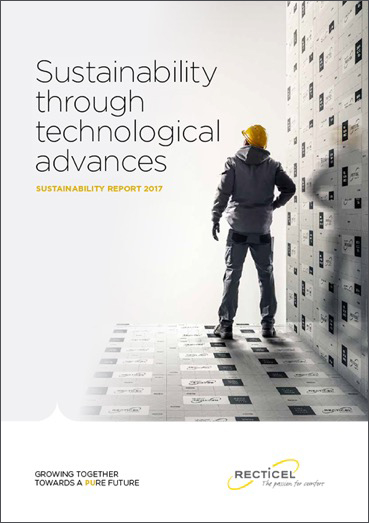Sustainability & ESG
Sustainability reporting
We are proud to share our 2024 Annual Report which is structured in accordance with the Corporate Sustainability Reporting Directive (CSRD).
Entitled ‘Leading the way in future-smart insulation’, this year’s report marks a significant step forward in how we communicate our performance, our impacts, risks and opportunities (IRO), reaffirming Recticel’s position as a progressive player in a fast-evolving insulation market.


